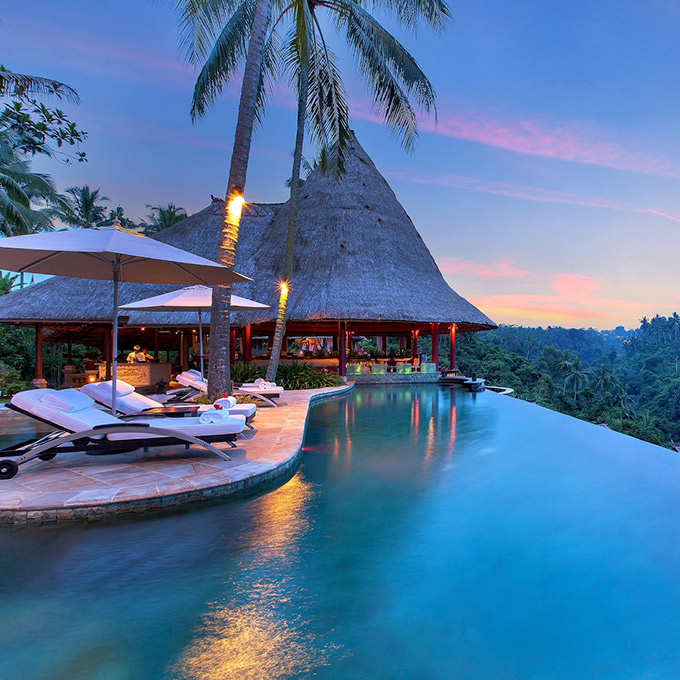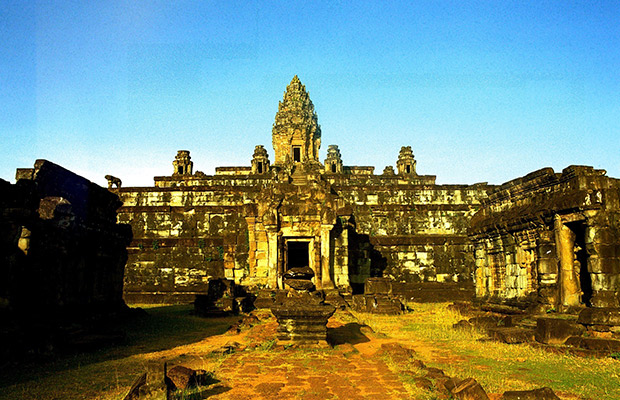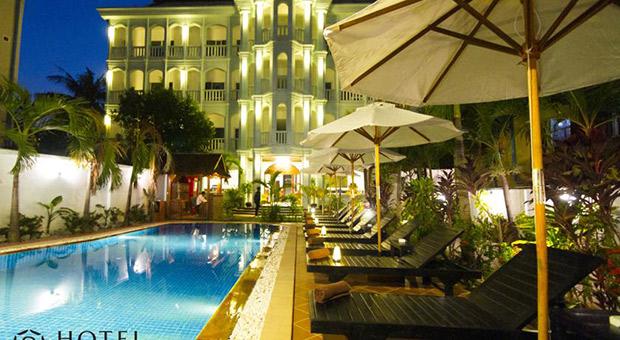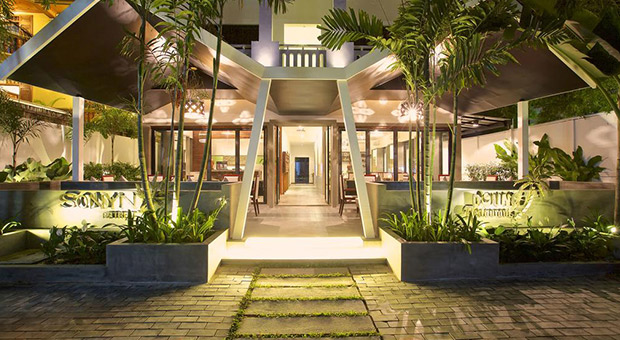- Home
- Siem Reap Travel Guide
- Bakong Temple
Bakong Temple
Bakong Temple
- Travel Location Siem Reap
Bakong is the first temple mountain of sandstone constructed by rulers of the Khmer empire at Angkor near modern Siem Reap in Cambodia. Bakong is located at Roluos south of Preah Ko. Enter and leave the temple at the east. A modern Buddhist temple is situated to the right of the east entrance to Bakong. It was build in late ninth ...
OVERVIEW
The most impressive member of the Roluos Group, sitting at the center of the first Angkorian capital, Hariharalaya. Bakong stands 15 meters tall and is 650x850m at the outer wall. Constructed by the third Angkorian-era king as his state-temple, Bakong represents the first application of the temple-mountain architectural formula on a grand scale and set the architectural tone for the next 400 years. The temple displays a very early use of stone rather than brick. Though begun by Indravarman I, Bakong received additions and was expanded by later kings. The uppermost section and tower may have been added as late as the 12th century AD. Some of the lintel carvings, particularly on the outer towers, are in very good shape. Picturesque moat and vegetation surround Bakong.
Video Travel Inspiration
Bakong (Khmer: ប្រាសាទបាគង) is the first temple mountain of sandstone constructed by rulers of the Khmer empire at Angkor near modern Siem Reap in Cambodia. In the final decades of the 9th century AD, it served as the official state temple of King Indravarman I in the ancient city of Hariharalaya, located in an area that today is called Roluos.
The structure of Bakong took shape of stepped pyramid, popularly identified as temple mountain of early Khmer temple architecture. The striking similarity of the Bakong and Borobudur temple in Java, going into architectural details such as the gateways and stairs to the upper terraces, suggests strongly that Borobudur was served as the prototype of Bakong. There must have been exchanges of travelers, if not mission, between Khmer kingdom and the Sailendras in Java. Transmitting to Cambodia not only ideas, but also technical and architectural details of Borobudur, including arched gateways in corbelling method.
History of Bakong Temple
In 802 AD, the first king of Angkor Jayavarman II declared the sovereignty of Cambodia. After ups and downs, he established his capital at Hariharalaya. Few decades later, his successors constructed Bakong in stages as the first temple mountain of sandstone at Angkor. The inscription on its stele (classified K.826) says that in 881 King Indravarman I dedicated the temple to the god Shiva and consecrated its central religious image, a lingam whose name Sri Indresvara was a combination of the king's own and the suffix "-esvara" which stood for Shiva ("Iśvara"). According to George Coedès, the devarāja cult consisted in the idea of divine kingship as a legitimacy of royal power, but later authors stated that it doesn't necessarily involve the cult of physical persona of the ruler himself.
Bakong enjoyed its status as the state temple of Angkor for only a few years, but later additions from the 12th or 13th centuries testify that it was not abandoned. Toward the end of the 9th century, Indravarman's son and successor Yasovarman I moved the capital from Hariharalaya to the area north of Siem Reap now known as Angkor, where he founded the new city of Yaśodharapura around a new temple mountain called Bakheng.
The Site of Bakong Temple
The site of Bakong measures 900 metres by 700 metres, and consists of three concentric enclosures separated by two moats, the main axis going from east to west. The outer enclosure has neither a wall nor gopuram and its boundary is the outer moat, today only partially visible. The current access road from NH6 leads at the edge of the second enclosure. The inner moat delimits a 400 by 300 metres area, with remains of a laterite wall and four cruciform gopuram, and it is crossed by a wide earthen causeway, flanked by seven-headed nāgas, such as a draft of nāga bridge . Between the two moats there are the remains of 22 satellite temples of brick. The innermost enclosure, bounded by a laterite wall, measures 160 metres by 120 metres and contains the central temple pyramid and eight brick temple towers, two on each side. A number of other smaller buildings are also located within the enclosure. Just outside the eastern gopura there is a modern buddhist temple.
The pyramid itself has five levels and its base is 65 by 67 metres. It was reconstructed by Maurice Glaize at the end of the 1930s according to methods of anastylosis. On the top there is a single tower that is much later in provenance, and the architectural style of which is not that of the 9th century foundations of Hariharalaya, but that of the 12th-century temple city Angkor Wat.
Though the pyramid at one time must have been covered with bas relief carvings in stucco, today only fragments remain. A dramatic scene-fragment involving what appear to be asuras in battle gives a sense of the likely high quality of the carvings. Large stone statues of elephants are positioned as guardians at the corners of the three lower levels of the pyramid. Statues of lions guard the stairways.
Related Hotels in Siem Reap
Mane Boutique Hotel & Spa
Nestled within lush green gardens, Mane Boutique Hotel & Spa offers peaceful and elegant accommodation with free WiFi access in its public areas. It features an outdoor saltwater swimming pool, fitness centre and spa facilities. The hotel is ...
S Hotel Siem Reap
Located in Siem Reap in the region of Siem Reap Province, 501 m from Pub Street, S Hotel Siem Reap features a year-round outdoor pool and barbecue. The hotel has a sun terrace and views of the pool, and guests can enjoy a meal at the ...
De Sonyn Boutique
Placed in the heart of Siem Reap’s Taphul Village and just a 10-minute walk to Pub Street, Night Market and famous Old Market, Sonyn Retreat offers clean and comfortable rooms with air-conditioning. It features an in-house restaurant and a ...
Paradise Angkor Villa Hotel
Located just 5 km from Angkor Wat, Paradise Angkor offers accommodation with free Wi-Fi and 24-hour room service in Siem Reap’s city centre. It features an outdoor pool, a spa and 4 dining options. A 5-minute drive from the bus station, ...
Paris Angkor Hotel
Featuring a swimming pool and an on-site restaurant, Paris Angkor Boutique offers accommodation in Siem Reap. Guest can also enjoy a free airport pick-up service. Free WiFi is available throughout the property. Rooms are equipped with ...
Empress Angkor Resort and Spa
Located across the Cambodian Cultural Village, Empress Angkor Hotel has an salt water infinity pool and a spa. Free WiFi is available throughout the property. It offers 3 dining options and provides free return transfers from Siem Reap ...
Free Property Registration
We market your property to a large audience of travellers worldwide, Join us today.













